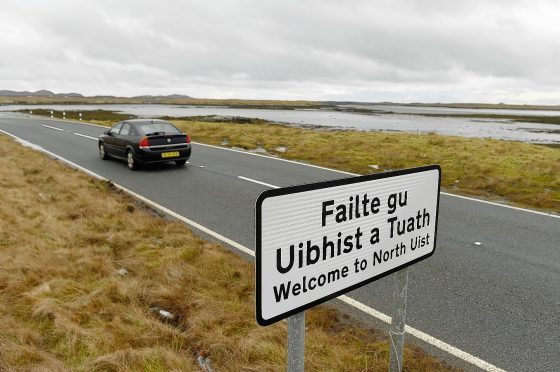The number of secondary pupils studying Gaelic in the Outer Hebrides – regarded as the traditional stronghold of the language – has witnessed a significant decline in the past 10 years.
Figures obtained from the local education authority show that in 2007, across four secondary schools, there were 78 fluent speakers taking Gaelic as a subject in secondary three and four. In 2016/2017, it had dropped to just 24.
The situation among those classed as learners shows a similar picture and trend – 114 a decade ago to 39 last year.
Comhairle nan Eilean Siar (Western Isles Council) are responsible for four secondary schools in the islands – the Nicolson Institute in Stornoway with 1,000 pupils, Sir E Scott School in Tarbert (187 pupils), Sgoil Lionacleit in Benbecula (256) and Castlebay in Barra (52).
As a result of the reduction in the number of pupils opting for Gaelic in the crucial years of secondary three and four, the number of those going on to study at a higher level has dropped accordingly.
The council itself says that more choice of subjects and the content of the course are areas that could have an effect.
A council spokesman said that “having looked at the figures we recognise that the numbers studying Gaelic have declined in recent years but show encouraging growth” for this academic year.
“Our teachers work very hard, and the authority is very pro-active in promoting Gaelic, but some of the elements in SQA courses are very dated and do not appeal to young people or relate to their lives,” he said.
“The comhairle runs a personalisation and choice exercise each year where young people choose from a menu of courses based on needs, training and aspirations. This provides young people with a much wider range of courses that was previously available to them and as a consequence numbers for higher has dropped considerably in almost all subjects in comparison with the number opting for higher in previous years. We would contend that young people are studying courses that are of more relevance to their career than was the case in 2007.”
He also pointed to an increase in the number of primary children in Gaelic medium education in the islands as well as more subjects being offered at secondary through the language, eight in all
“We recognise that there is much to be done but there is also a lot to be positive about in terms of Gaelic development in the islands,” said the spokesman.
